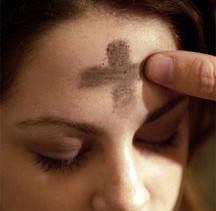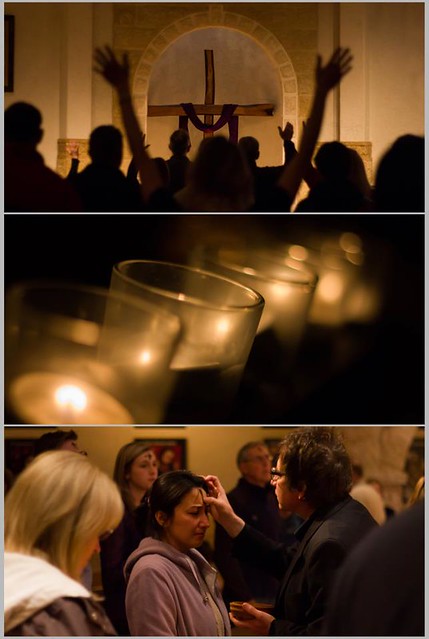Why Ashes?
(This was originally posted in 2013.)
Ash Wednesday marks the beginning of Lent — the forty days of fasting the lead us to Easter. It is a time to recall, retell, relive Jesus’ journey to his crucifixion and death. But why Ash Wednesday? Of course it’s because on this Wednesday millions of Christians around the world from different denominations will have an ashen cross imposed on their forehead. (I even know of some Baptist churches that have adopted this practice!) But what’s it about? Why this ancient Christian practice?
Ashes speak of two things: Repentance and Mortality. These are the dual themes of Ash Wednesday.
The Bible frequently speaks of “repenting in sackcloth and ashes.” Jesus himself spoke of repenting in sackcloth and ashes. (Matthew 11:20-21) A person grieving or repenting would cover themselves in ashes as a public expression of their inner state. But you say, “We don’t do that sort of thing anymore.” Precisely! But why not?
Do we have nothing to repent of? Of course we have plenty to repent of! Then what is it? Might it be that we are too embarrassed to repent publicly? Yet another example of the privatization of our faith?
The Hebrew prophets spoke of the proud and unrepentant as having a “brazen forehead.” A forehead as hard as bronze. Ashes on the forehead is a sign of repentance and humility. An ashen forehead is the opposite of a brazen forehead.
Ashes also remind us of our mortality. We are made of ashes and dust — and to ashes and dust we will return. But modern man is offended by this — we steadfastly refuse to contemplate our own death. It’s a kind of neurosis. The Scriptures describe this aversion to facing our own mortality as foolishness. The wise take to heart that each day counts because our days are numbered, they are limited. We are mortal, not immortal. Immortality is an attribute of God, it is not a human attribute. Immortality is given by God as a gift (Resurrection).
Through the Incarnation God in Christ joined us in human mortality. This is what we recall during Lent. On the night before his death Jesus said…
“Where I am going you cannot follow me now, but you will follow afterward.” (John 13:36)
Jesus was speaking of his death. Jesus went into death so that we might follow Jesus even in dying. This is a great mystery. Jesus leads us into death…that he might lead us out of death.
The ashes upon our forehead say, “Remember that you are dust, and to dust you shall return.”
Finally, it’s an ashen cross that is placed upon our forehead on Ash Wednesday. We are identifying the most prominent part of our body with the cross of Christ. With the ashen cross on our forehead we say, “I am not ashamed of the gospel of Jesus Christ.”
I remember a couple of years ago seeing an ESPN basketball analyst with a cross on his forehead on Ash Wednesday. He said nothing about the cross. He spoke only about the basketball game. But when I viewed that video clip on ESPN.com, all of the comments were about “that thing on his forehead.” Some were baffled. Some explained what it was. Some were amused. Some mocked. Some supported this witness. Which is pretty much the range of reaction to the cross of Christ itself.
I thought it was awesome! So I made up my mind to incorporate this Christian practice into our Ash Wednesday services.
What’s that mark on your forehead? someone may well ask.
This will be my reply…
Today is Ash Wednesday. It’s an ashen cross. It reminds me that I am mortal and that I will die. It also reminds me that Jesus died too — he died for us and with us. It reminds me that I will follow Jesus all the way to death. But in death Jesus will receive me; and on the last day he will raise me to life immortal. So today in honor of Christ I wear an ashen cross on my forehead.
BZ
Word of Life will have four 30 minute Ash Wednesday services in The Upper Room.
7:00 AM | Noon | 5:30 PM | 7:00 PM
Here’s a glimpse of one our Ash Wednesday services in the Upper Room…


